Epoxy-Based Composites Embedded with High Performance BZT-0.5BCT Piezoelectric Nanoparticles Powders for Damping Vibration Absorber Application
Abstract
:1. Introduction
2. Results and Discussions
3. Materials and Methods
4. Conclusions
Acknowledgments
Author Contributions
Conflicts of Interest
References
- Amick, H.; Gendreau, M. Construction vibrations and their impact on vibration-sensitive facilities. ASCE Constr. Congr. 2000. [Google Scholar] [CrossRef]
- Yu, X.; Fu, Y. Dynamic analysis of damage behavior of vibration compaction on concrete bridges. In Proceedings of the Seventh International Conference on Traffic and Transportation Studies, Kunming, China, 3–5 August 2010. [Google Scholar]
- Alavinasab, A.; Padewski, E.; Holley, M.; Jha, R.; Ahmadi, G. Damage Identification Based on Vibration Response of Prestressed Concrete Pipes. In Proceedings of the ASCE Pipelines Conference: Climbing New Peaks to Infrastructure Reliability—Renew, Rehab, and Reinvest, Keystone, CO, USA, 28 August–1 September 2010. [Google Scholar]
- Fan, W.; Qiao, P. Vibration-based damage identification methods: A review and comparative study. Struct. Health Monit. 2011, 10, 83–111. [Google Scholar] [CrossRef]
- Kwak, G.H.; Inoue, K.; Tominaga, Y.; Asai, S.; Sumita, M. Characterization of the vibrational damping loss factor and viscoelastic properties of ethylene–propylene rubbers reinforced with micro-scale fillers. J. Appl. Polym. Sci. 2001, 82, 3058–3066. [Google Scholar] [CrossRef]
- Saravanan, C.; Ganesan, N.; Ramamurti, V. Vibration and damping analysis of multilayered fluid filled cylindrical shells with constrained viscoelastic damping using modal strain energy method. Comput. Struct. 2000, 75, 395–417. [Google Scholar] [CrossRef]
- Skandani, A.A.; Masghouni, N.; Case, S.W.; Leo, D.J.; Al-Haik, M. Enhanced vibration damping of carbon fibers-ZnO nanorods hybrid composites. Appl. Phys. Lett. 2012, 101, 73–111. [Google Scholar]
- Guo, X.J.; Zhang, J.S.; Xu, D.Y.; Xie, X.C.; Sha, F.; Huang, S.F. Effects of PMN Volume Fraction on the Damping Properties of 1–3 Piezoelectric Damping Composites. Appl. Mech. Mater. 2014, 624, 8–12. [Google Scholar] [CrossRef]
- Suhr, J.; Koratkar, N.A.; Ye, D.; Lu, T.M. Damping properties of epoxy films with nanoscale fillers. J. Intell. Mater. Syst. Struct. 2006, 17, 255–260. [Google Scholar] [CrossRef]
- Anton, S.R.; Sodano, H.A. A review of power harvesting using piezoelectric materials (2003–2006). Smart Mater. Struct. 2007, 16, R1. [Google Scholar] [CrossRef]
- Ren, B.; Or, S.W.; Zhang, Y.; Zhang, Q.; Li, X.; Jiao, J.; Wang, W.; Liu, D.; Zhao, X.; Luo, H. Piezoelectric energy harvesting using shear mode 0.71Pb(Mg1/3Nb2/3)O3–0.29PbTiO3 single crystal cantilever. Appl. Phys. Lett. 2010, 96, 083–502. [Google Scholar] [CrossRef]
- Deng, Z.; Dai, Y.; Chen, W.; Pei, X.; Liao, J. Synthesis and characterization of bowl-like single-crystalline BaTiO3 nanoparticles. Nanoscale Res. Lett. 2010, 7, 1217–1221. [Google Scholar] [CrossRef] [PubMed]
- Wang, X.D.; Song, J.H.; Liu, J.; Wang, Z.L. Direct-current nanogenerator driven by ultrasonic waves. Science 2007, 5821, 102–105. [Google Scholar] [CrossRef] [PubMed]
- Klimiec, E.; Zaraska, W.; Zaraska, K.; Gasiorski, K.P.; Sadowski, T.; Pajda, M. Piezoelectric polymer films as power converters for human powered electronics. Microelectron Reliab. 2008, 48, 897–901. [Google Scholar] [CrossRef]
- Marra, S.P.; Ramesh, K.T.; Douglas, A.S. The mechanical properties of lead-titanate/polymer 0–3 composites. Compos. Sci. Technol. 1999, 59, 2163–2173. [Google Scholar] [CrossRef]
- Hori, M.; Aoki, T.; Ohira, Y.; Yano, S. New type of mechanical damping composites composed of piezoelectric ceramics, carbon black and epoxy resin. Compos. Part A 2001, 32, 287–290. [Google Scholar] [CrossRef]
- Tang, D.; Zhang, J.; Zhou, D.; Zhao, L. Influence of BaTiO3 on damping and dielectric properties of filled polyurethane/unsaturated polyester resin interpenetrating polymer networks. J. Mater. Sci. 2005, 40, 3339–3345. [Google Scholar] [CrossRef]
- Malakooti, M.H.; Hwang, H.S.; Sodano, H.A. Morphology-Controlled ZnO Nanowire Arrays for Tailored Hybrid Composites with High Damping. ACS Appl. Mat. Interfaces 2014, 7, 332–339. [Google Scholar] [CrossRef] [PubMed]
- Cai, Z.L.; Wang, Z.M.; Wang, H.H.; Cheng, Z.X.; Li, B.W.; Guo, X.L.; Kimura, H.; Kasahara, A. An Investigation of the Nanomechanical Properties of 0.5Ba(Ti0.8Zr0.2)O3–0.5(Ba0.7Ca0.3)TiO3 Thin Films. J. Am. Ceram. Soc. 2015, 98, 114–118. [Google Scholar] [CrossRef]
- Zhou, Z.; Bowland, C.C.; Malakooti, M.H.; Tang, H.X.; Sodano, H.A. Lead-free 0.5Ba(Zr0.2Ti0.8)O3– 0.5(Ba0.7Ca0.3)TiO3 nanowires for energy harvesting. RSC Nanoscale 2016, 8, 5098–5105. [Google Scholar] [CrossRef] [PubMed]
- Wu, W.W.; Cheng, L.; Bai, S.; Dou, W.; Xu, Q.; Wei, Z.Y.; Qin, Y. Electrospinning lead-free 0.5Ba(Zr0.2Ti0.8)O3–0.5(Ba0.7Ca0.3)TiO3 nanowires and their application in energy harvesting. J. Mater. Chem. A 2013, 1, 7332–7338. [Google Scholar] [CrossRef]
- Wang, Z.M.; Zhao, K.; Guo, X.L.; Sun, W.; Jiang, H.L.; Han, X.Q.; Tao, X.T.; Cheng, Z.X.; Zhao, H.Y.; Kimura, H.; et al. Crystallization, phase evolution and ferroelectric properties of sol–gel-synthesized Ba(Ti0.8Zr0.2)O3–x(Ba0.7Ca0.3)TiO3 thin films. J. Mater. Chem. C 2013, 1, 522–530. [Google Scholar] [CrossRef]
- Guo, D.; Mao, W.; Qin, Y.; Huang, Z.; Wang, C.; Shen, Q.; Zhang, L. Damping properties of epoxy-based composite embedded with sol-gel derived Pb(Zr0.53Ti0.47)O3 thin film annealed at different temperatures. J. Mater. Sci. Mater. Electron. 2012, 23, 940–944. [Google Scholar] [CrossRef]
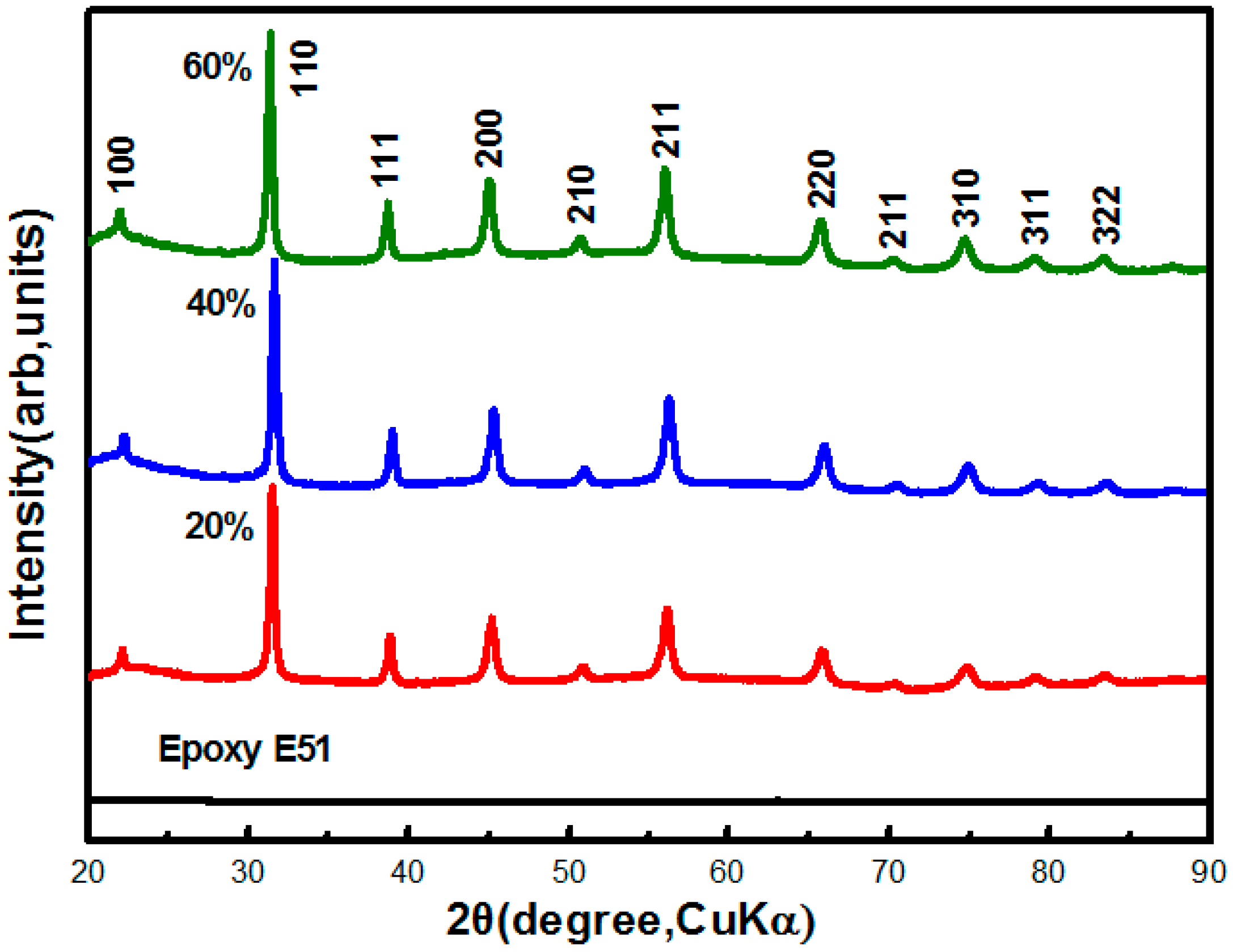
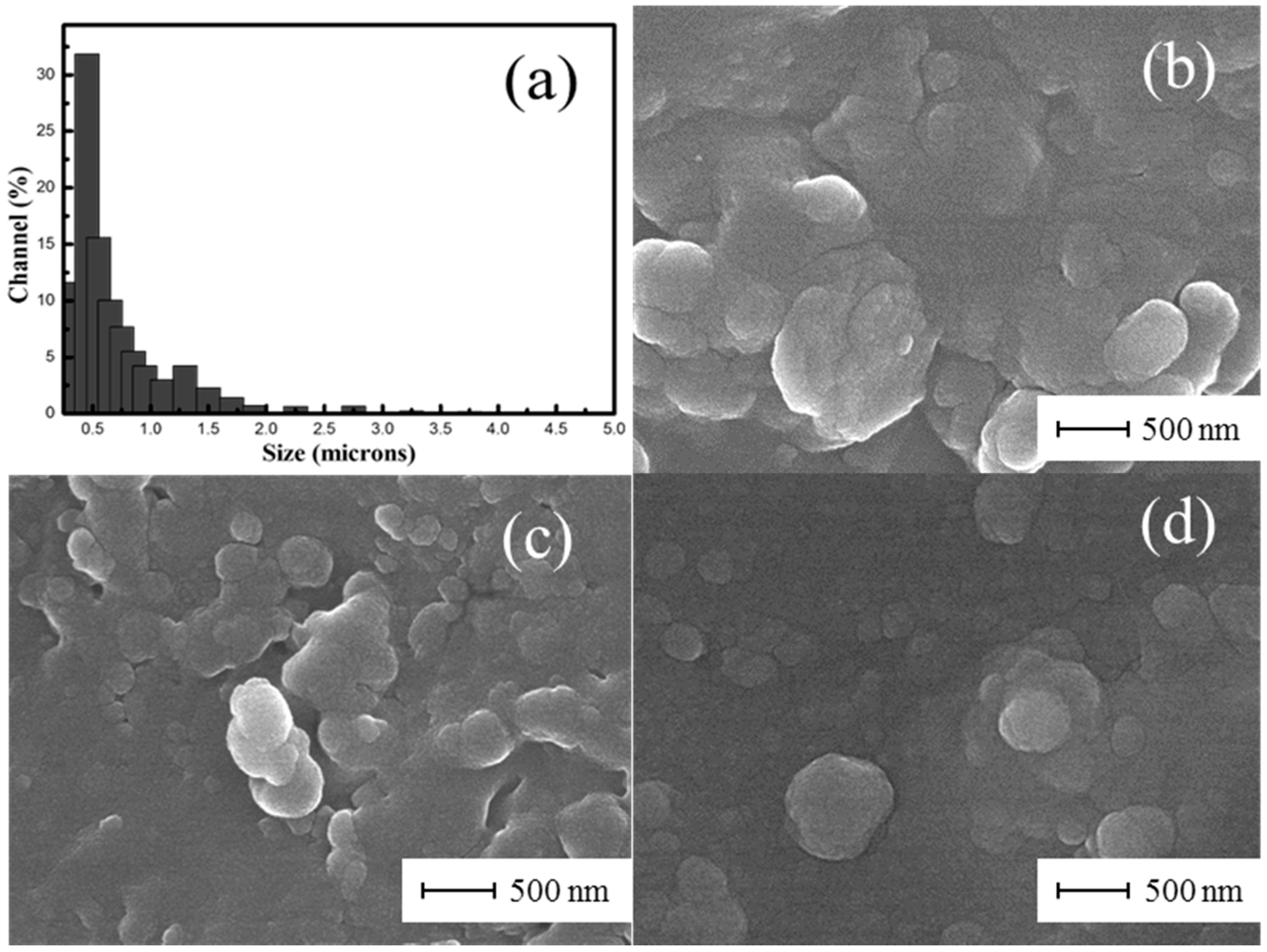


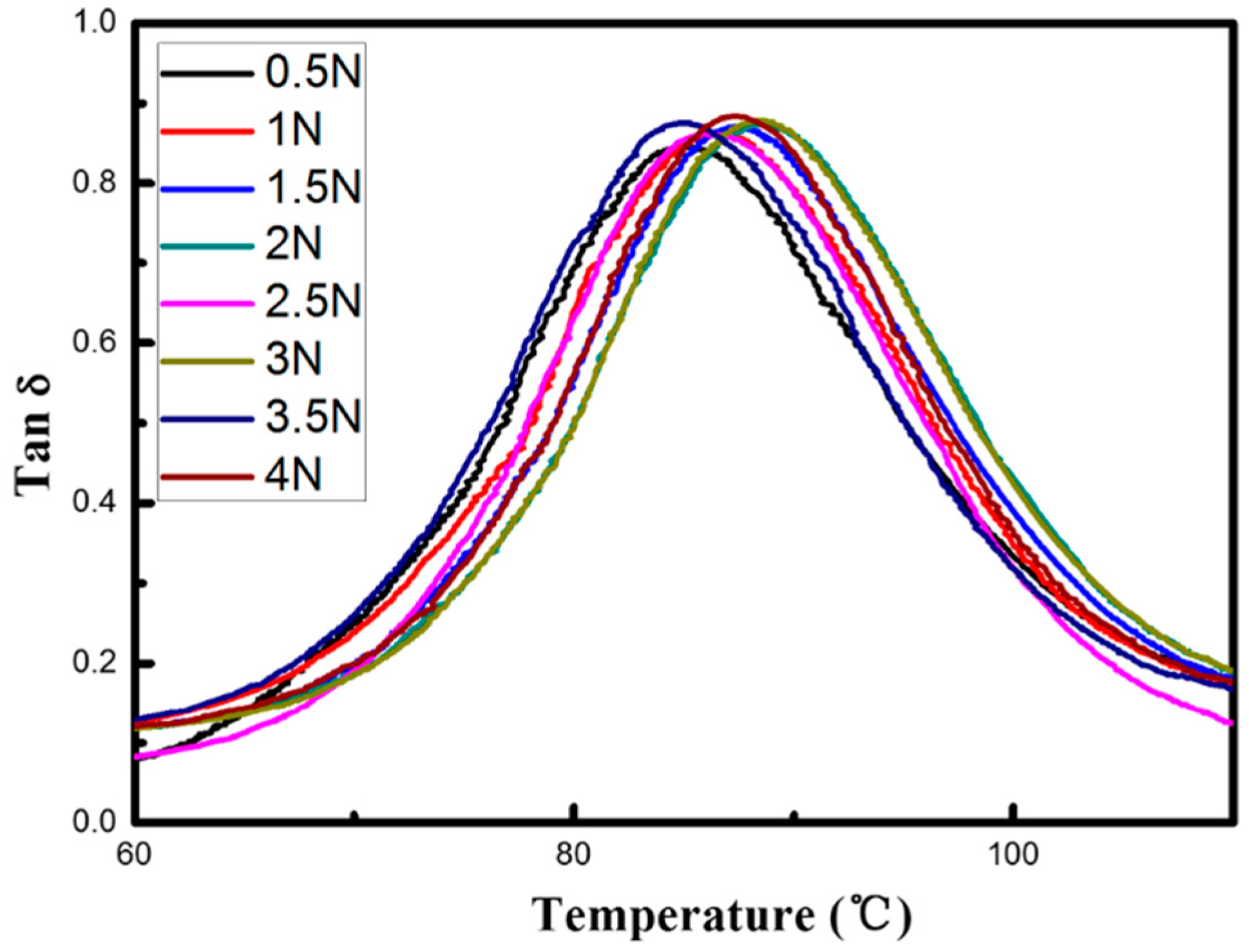
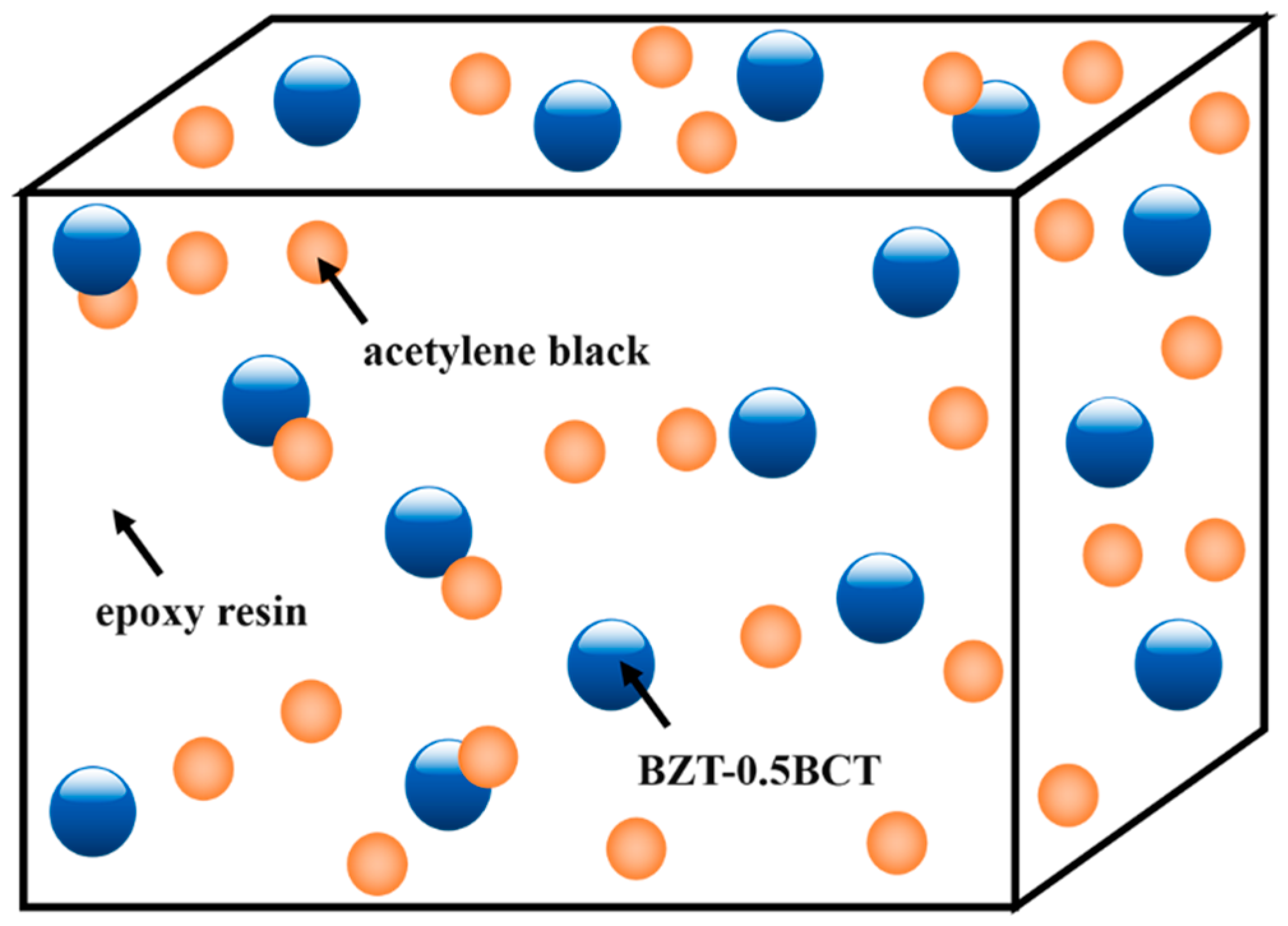
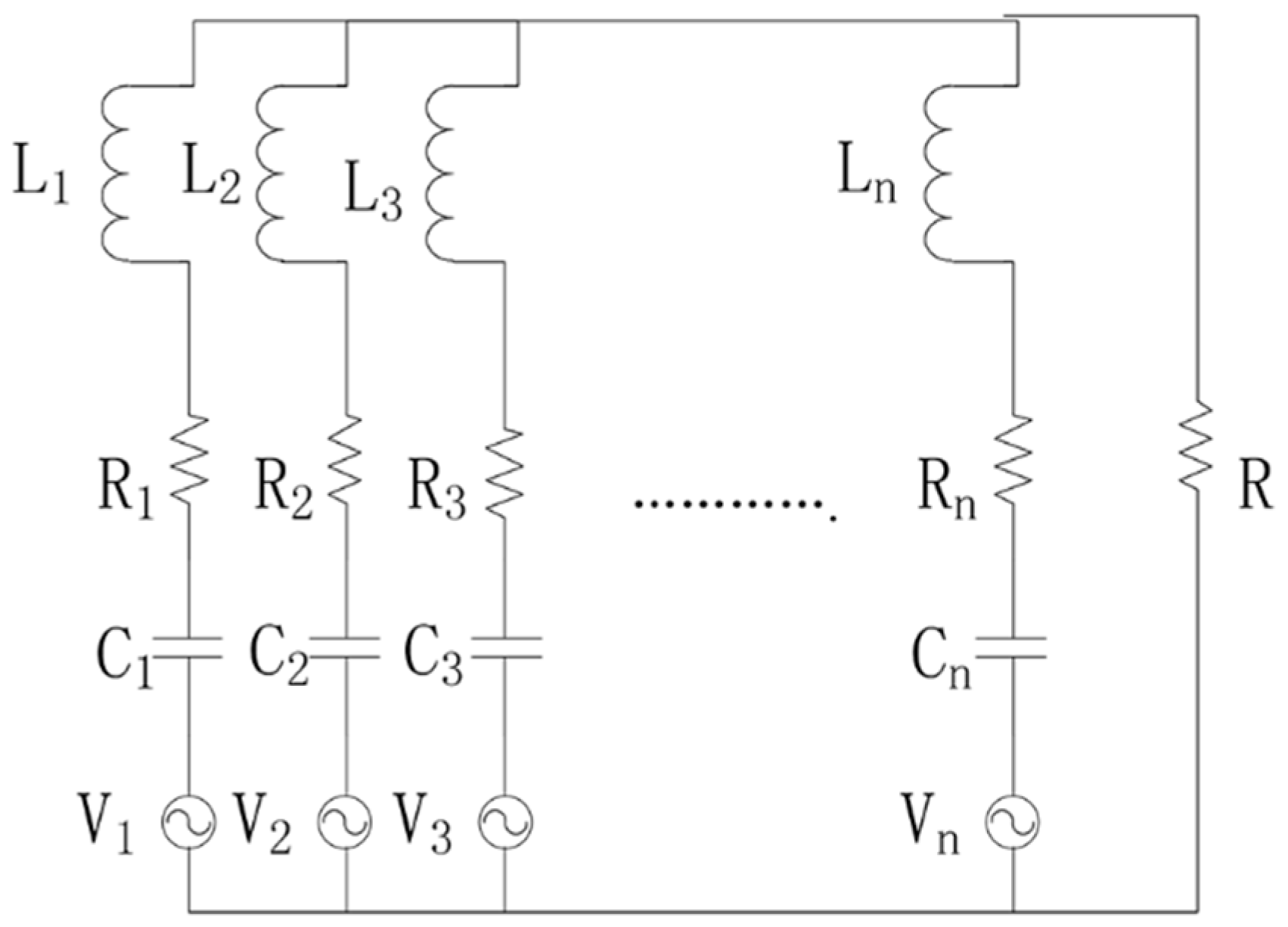
| Volume Fraction (vol %) | Maximum Loss Factor (tan δmax) | Glass Transition Temperature Tg (°C) | Temperature Range (tan δ > 0.3) (°C) |
|---|---|---|---|
| 0 | 1.135 | 71.8 | 62.6~90.1(27.5) |
| 20 | 0.846 | 84.9 | 71.7~101.3(29.6) |
| 40 | 0.857 | 87.5 | 74.8~103.9(29.1) |
| 60 | 0.826 | 86.7 | 75.1~100.7(25.6) |
| Frequency (Hz) | Maximum Loss Factor (tan δmax) | Glass Transition Temperature Tg (°C) | temperature Range (tan δ > 0.3) (°C) |
|---|---|---|---|
| 1 | 0.803 | 76.6 | 66.3~88.5(22.2) |
| 2 | 0.835 | 80.3 | 68.8~94.2(25.4) |
| 4 | 0.848 | 84.0 | 71.9~97.7(25.8) |
| 10 | 0.858 | 87.4 | 74.8~103.8(29.0) |
| 20 | 0.869 | 88.2 | 74.1~105.7(31.6) |
| Loading Force (N) | Maximum Loss Factor (tan δ) | Glass Transition Temperature Tg (°C) | Temperature Range (tan δ > 0.3) (°C) |
|---|---|---|---|
| 0.5 | 0.847 | 84.9 | 71.7~101.3 (29.6) |
| 1 | 0.863 | 86.4 | 72.4~101.6 (29.2) |
| 1.5 | 0.871 | 87.3 | 74.1~102.9 (28.8) |
| 2 | 0.874 | 88.6 | 75.1~103.7 (28.6) |
| 2.5 | 0.876 | 88.5 | 75.0~103.7 (28.7) |
| 3 | 0.879 | 88.5 | 75.0~103.7 (28.7) |
| 3.5 | 0.875 | 85.0 | 71.3~100.6 (29.3) |
| 4 | 0.884 | 87.3 | 74.3~101.9 (27.6) |
© 2017 by the authors. Licensee MDPI, Basel, Switzerland. This article is an open access article distributed under the terms and conditions of the Creative Commons Attribution (CC BY) license (http://creativecommons.org/licenses/by/4.0/).
Share and Cite
Wang, Z.; Wang, H.; Zhao, W.; Kimura, H. Epoxy-Based Composites Embedded with High Performance BZT-0.5BCT Piezoelectric Nanoparticles Powders for Damping Vibration Absorber Application. Crystals 2017, 7, 105. https://doi.org/10.3390/cryst7040105
Wang Z, Wang H, Zhao W, Kimura H. Epoxy-Based Composites Embedded with High Performance BZT-0.5BCT Piezoelectric Nanoparticles Powders for Damping Vibration Absorber Application. Crystals. 2017; 7(4):105. https://doi.org/10.3390/cryst7040105
Chicago/Turabian StyleWang, Zengmei, Huanhuan Wang, Wenyan Zhao, and Hideo Kimura. 2017. "Epoxy-Based Composites Embedded with High Performance BZT-0.5BCT Piezoelectric Nanoparticles Powders for Damping Vibration Absorber Application" Crystals 7, no. 4: 105. https://doi.org/10.3390/cryst7040105




